Browse using the new Vinous website now. Launch →
Printed by, and for the sole use of . All rights reserved © 2015 Vinous Media
Burgundy With (A Bit of) Age: 2000-2014
BY NEAL MARTIN | MAY 7, 2019
The “Fascration” of Burgundy
Time has ticked away at the same pace since it began, decelerating only when one approaches the speed of light – or while waiting for Bordeaux châteaux to release their wines en primeur. Time and wine are inextricable insofar as all but non-vintage wines are the result of temporally defined growing seasons that govern quality, reputation, monetary value, and how soon you and I might decide to crack them open. When to extract cork from bottle is a subjective and inexact science. The only certainty is that all wine eventually turns to vinegar; some of it just gets there quicker. Experienced professionals can only offer flexible drinking windows that will “open” and “close” depending on the factors we believe influence longevity.
Is ageworthiness governed by terroir or vine age? Is it determined by fruit concentration or acidity? Tannins or balance? I could compose a thesis on the subject and still be wrong. Empirically – that is to say, by drinking the stuff – I aver that tannic structure and acidity are fundamental, although in reality, all the aforementioned factors are interconnected and determine vinous life span. It is never predictable; we can only conjecture.
I find the evolutionary path of red Bordeaux easier to estimate than that of red Burgundy. Pinot Noir is more capricious. It follows its own route, and not necessarily the one initially projected. In fact, sometimes Burgundy seems determined to make you look like the worst clairvoyant who ever lived. Look how 1993s blossomed in their later years, or how the jury remains out on the 1996s. That is all part of the fascination and frustration of Burgundy – the frascration of Burgundy! Factor in premature oxidation with respect to the whites, and potential longevity becomes a sick joke as your expensive Grand Cru deteriorates into something resembling dishwater, but with less cleaning power. No wonder many people obviate risk by martyring white Burgundy in its infancy, or simply looking elsewhere – in my case, toward South Africa and New Zealand. There was a classic case of pre-mox when two bottles of Bâtard-Montrachet from Domaine Leflaive were served blind, the refulgent 1996 appearing a decade younger than the turbid, amber-hued 2008. You will find both notes in this report.
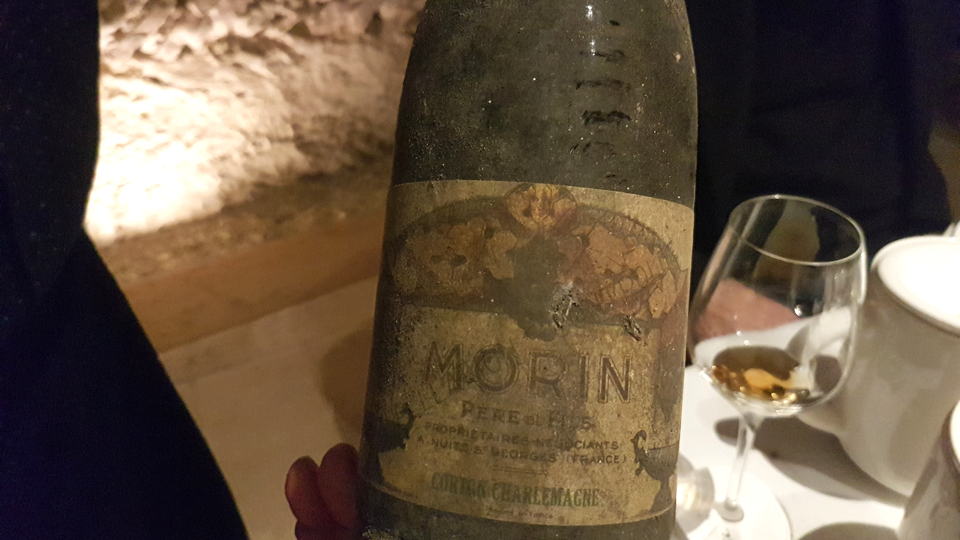
How old do you like your Burgundy? Would you try your luck on this 1921 Corton-Charlemagne from Morin? See Part Two to find out how it tasted.
The Vault
In recent months I have been hoarding what might be termed "mature Burgundy" notes that span decades. I use the word "mature" in the loosest sense, including wines that have spent three years or more in bottle. My vault contained 500 tasting notes, a gallimaufry of famous and unknown (even extinct) domaines. Revered and excoriated vintages. Jaw-dropping legends rubbing shoulders with quirky bottles unlikely to be seen again. If there is one lesson to take away from these notes, it’s this: Never dismiss a bottle based on vintage or producer. Take a vintage like 2000: conventional wisdom is that the millennial year was all about Bordeaux and not Burgundy, yet I am discovering plenty of gems, and as a whole, the wines appear to be maturing in bottle better than once presumed. Take a grower like Seguin Manuel: ancient bottles might not have the cachet of Rousseau or Roumier, yet they represent some of the most profound examples of mature Burgundy that I have tasted.
It’s time these long overdue notes see the light of day. Having cleaved away those pertaining to verticals that merit standalone articles and individual bottles worthy of Cellar Favorites, I divided the remaining notes into two parts. This first part covers vintages from 2014 back to 2000. The second part stretches back from 1999 to the dawn of time. Well, not quite that far. Let’s just say, long before you were born. The reason is that a majority of tasting notes in Part One derive from a series of mini-horizontals that wine writer (and now winemaker) Sarah Marsh MW organized over recent months. These are 2000, 2001 and 2002 reds, plus 2008 whites. All bottles came directly from domaines' cellars. In addition, you will find many tasting notes on 2011 reds assembled by Flint Wines and 2013 reds courtesy of Geodhuis & Co. These are augmented by countless dinners, special tastings such as a Gevrey-Chambertin showcase in Hong Kong and a Clos de Vougeot tasting in Clos Vougeot during Les Grands Jours in March 2018.
As Antonio Galloni mentioned in a recent Cellar Favorite, updates on recent vintages are often overlooked. As much as possible, we taste the final wines, and in my case, I prefer to leave them another 12 months to let them settle, hence my annual Burgfest reports. Often those same wines might not be re-examined unless they are lucky enough to appear in a 10-year retrospective or vertical. Yet in terms of consumption, vintages between three and eight years old are the most commonly consumed. Request a mature bottle in a Beaune restaurant and the sommelier is likely to dust off a vintage between 2011 and 2014. That has become the diluted definition of maturity, and it is the only choice, because any restaurant listing older vintages, particularly with reasonable mark-ups, will trigger a red alert across social media, and in the blink of an eye the list is plucked free of irreplaceable wines.
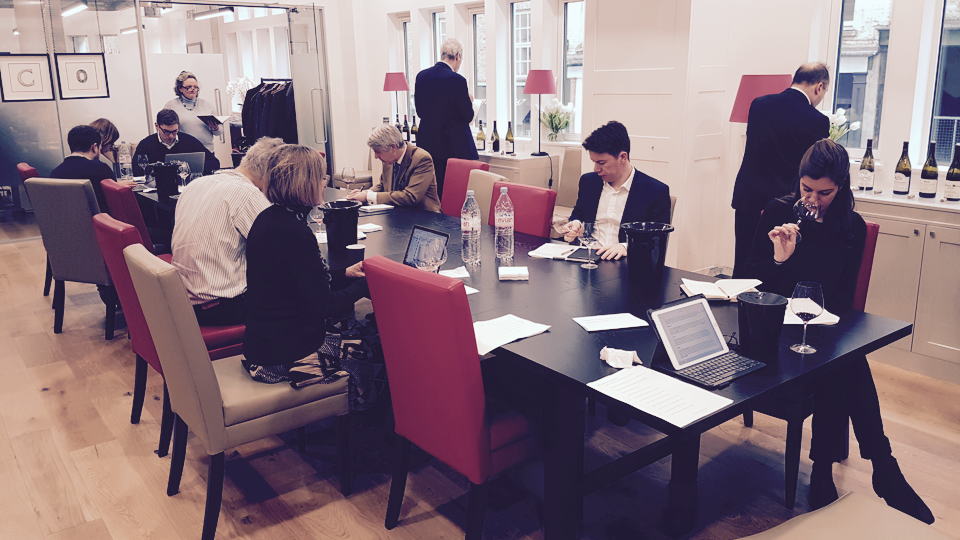
At one of several fascinating vintage retrospectives organized by Sarah Marsh MW. Such tastings are fairly uncommon.
Vintages within our purview here are not the oldest or necessarily the most esteemed. Yet they boast numerous interesting and delicious wines that potentially constitute better value than, say, 2005 or 2009. The aim of these tasting notes is to either update existing entries in the database or fill in gaps. Such is the infinite horizon of Burgundy that it is impossible to review a fraction of its countless cuvées, so as I have written before, my strategy has always been to chip away as best I can. These notes make a small inroad, but an inroad nonetheless, my contribution alongside those of my fellow Vinous contributors.
Since there are more than 300 tasting notes, let me add a few remarks:
1) You will find a couple of tasting notes from the late Henri Jayer. The strange thing is that my most positive experiences have come from his humble Village Crus. I guess that makes little difference, since they also now cost a fortune, but Jayer’s ability to elevate his most modest terroirs to an altogether higher level testifies to a great winemaker.
2) Speaking of which, there are a number of bottles from Domaine Leroy, including two 2004s Village Crus that were declassified from Premier and Grand Cru. When these were first released, some experts hailed their quality. Personally, I found them disappointing compared to Lalou Bize-Leroy’s other vintages. I was intrigued to revisit them, and in November 2018, two bottles bought on release were served. The wines confirmed my original view, and though they are now incredibly expensive, they have not aged particularly well. Lalou’s excellent 2001 Nuits Saint-Georges Les Boudots, served alongside at that dinner, merely highlighted their shortcomings.
3) The prices of Arnaud Ente’s wines are now astronomical, fueled particularly by demand from East Asia. I must confess that while I enjoyed the wines, especially Ente’s fantastic Bourgogne Aligoté, I couldn’t see what the fuss was about. A couple of recent bottles have forced me to alter that view, not least a show-stopping 2010 Bourgogne Blanc that made a mockery of the Burgundy hierarchy and matched many Premier Crus included in this report. And yes, I stand by that score.
4) Like many Burgundy-lovers, I am not a fan of the 2004 reds, which tend to show distasteful green/vegetal elements, purportedly because of lady beetles entering the vats. When a wine with the pedigree and track record of La Romanée seems affected, then I am not optimistic for other wines. Some of the whites that I have encountered do seem less compromised, even though I suspect many have already been consumed. Two Montrachets from Drouhin and Vincent Girardin were excellent and surpassed vintages with greater renown for their whites.
5) The 2010 vintage both for whites and reds is incredible. Dare I suggest that the wines might surpass their 2005 counterparts and that the only reason that they are not afforded more attention is because of the great 2010 Bordeaux?
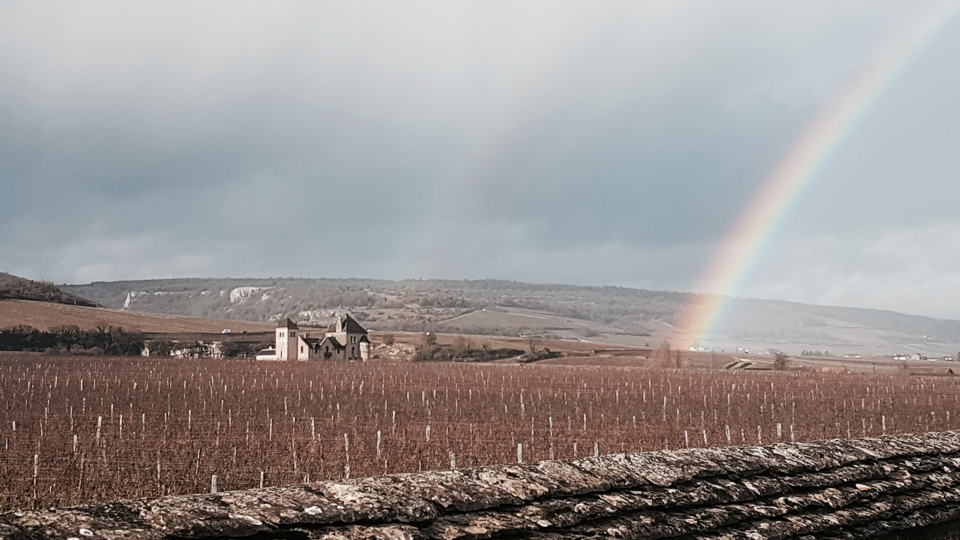
Clos de Vougeot, where François Labet helped organize a fascinating tasting of namesake bottles back to 1990, all included here.
Vintage Summaries
Allow me to refresh readers’ memories with summaries of the aforementioned growing seasons and brief comments about how their wines showed.
2000 Red Burgundy
Growing Season
The 2000 vintage may have been lionized in Bordeaux. However, it is a different story in Burgundy, which made do with a fair-to-middling growing season. Winter was relatively mild, and thankfully, spring saw no frost. Early flowering was prompted by clement weather in May and June that signaled an abundant harvest. July threw a spanner in the works; cool temperatures and heavy downpours caused endemic rot, necessitating hours in the vineyard spraying vines. The pendulum swung the other way in August when temperatures began to belatedly rise and rainclouds dispersed. An Indian summer might have saved the day, but September began decidedly cool and it was only on September 13 that warmer weather returned. Storms affected the Côte de Beaune and also the Côte Chalonnaise, so that winemakers had to carefully parse out rot from entering the vats, once picking commenced on September 11 in the Côte de Beaune and two days later in the Côte de Nuits. The storms tilted quality away from the Côte de Beaune toward the latter. Yields were quite high, so growers who did not prune earlier in the season had to be on top of their green harvesting. The variability in quality, coupled with Bordeaux‘s domination of the headlines, meant that the Burgundies were predestined to be overlooked and perhaps unfairly maligned.
The Wines
Burgundy-lovers should not overlook the 2000 reds, at least based on this selection. I direct readers immediately to the 2000 Pernand-Vergelesses Ile de Vergelesses 1er Cru from Domaine Chandon de Briailles, what you might call a “traditional” grower whose wines often punch above their weight. François de Nicolay is a superb vigneron and he and his sister Claude are turning out beautiful wines at wallet-friendly prices. This Pernand-Vergelesses has aged beautifully, a little gem that I suspect many consumed prematurely in the misguided belief that Pernand-Vergelesses’s wines cannot age. They can in talented hands. A grower that I have criticized in the past for their heavy-handedness in the winery and their oak-driven style is Pierre Damoy. Encounters with recent vintages suggest a welcome shift toward a more hands-off winemaking style. Though a clutch of Damoy 2002s were generally disappointing, their 2000 Chambertin indicates that there are exceptions. The showing of Anne Gros’s 2000 Richebourg was pleasing. I have been following her wines since long before I began writing but have rarely been afforded chances to taste mature bottles. This is just full of character. I also enjoyed the 2000 Vosne-Romanée Aux Brûlées from Anne’s cousin Michel Gros. Like Damoy, I sometimes find that his wines undergo too much work in the winery, but this had aged with style; likewise his monopole of Clos des Réas.
2001 Red Burgundy
Growing Season
The 2001 red Burgundy vintage is seen in a slightly more positive light than 2000, although both are overshadowed by 1999 and 2002. Unlike the previous year, flowering in 2001 was prolonged and uneven. The heterogeneous ripening cycle persisted throughout the growing season until harvest. July was plain miserable, wet and cold until the end of the month, and just when winemakers thought their luck had changed, a series of hailstorms hit Volnay, Pommard and Monthélie on August 2. This exacerbated uneven concentration levels, although higher temperatures as August progressed allowed bunches to catch up with maturity and produced thick-skinned berries. An overcast September with intermittent rainfall dashed hopes when it continued into picking, which began on September 17 in the Côte de Beaune and three days later in the Côte de Nuits. Sunnier weather returned on September 28, whereupon growers dispatched as many pickers as they could to bring in the remaining fruit before the weather turned again.
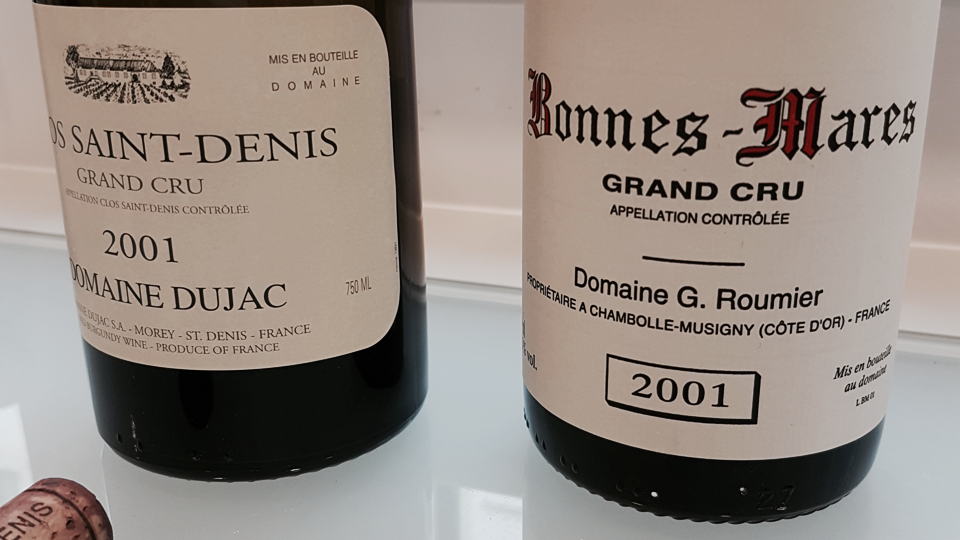
The Wines
These 2001 reds were a mixed bag. There are some deeply impressive wines, although they tend to be restricted to the very best vineyards – for example, the 2001 Clos Saint-Denis from Domaine Dujac, still sparkling fresh after 17 years, or the 2001 Vosne-Romanée Cros Parantoux from Méo-Camuzet. Sarah Marsh’s 2001 horizontal included what can only be described as a misfiring Chambolle-Musigny Les Amoureuses from J-F Mugnier, but then a few weeks later I encountered a far better bottle in Dijon. This second bottle seemed more representative, so this is the note published here. The 2001 Latricières-Chambertin from Rossignol-Trapet showed well, even though Nicolas and David Rossignol are crafting even better wines today, while the 2001 Mazoyères-Chambertin courtesy of Perrot-Minot hit the spot and is drinking beautifully. The 2001 Nuits Saint-Georges Les Pruliers from Henri Gouges is a reminder that aging is mandatory for this domaine’s wines, which have a tendency to taste awkward in their youth. Generally, the best 2001 reds demonstrate a little more structure and sinew than the 2000s, although I can’t help feeling that some wines are losing a bit of charm as they mature – such as the 2001 Pommard Clos des Epeneaux from Comte Armand. It is almost as if the 2000s are aware of their own limitations and just do the best they can, whereas the 2001s strive to be superior and lose some of their joie de vivre in doing so.
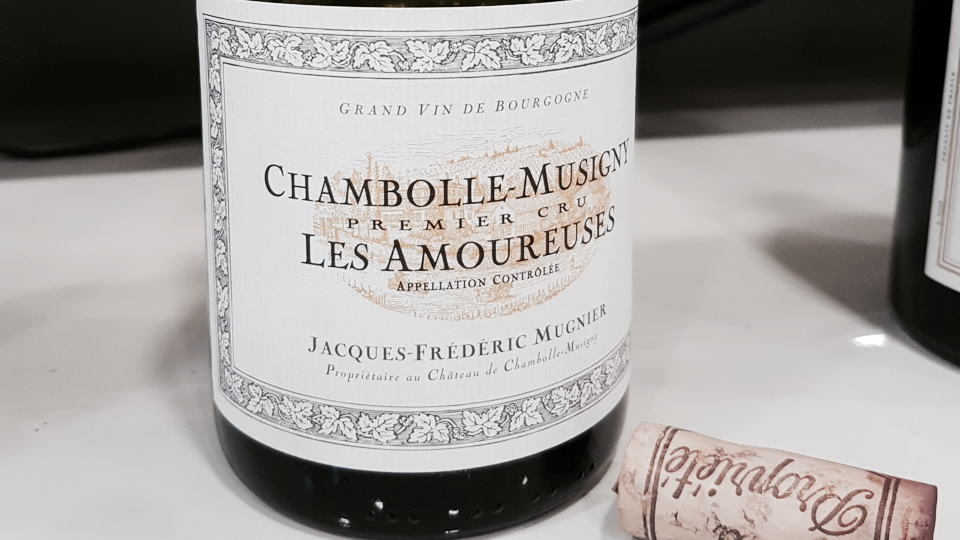
2002 Red Burgundy
Growing Season
After an extremely cold winter, spring was rainy but quite warm, leading to early and even bud-break. Cool temperatures then retarded the flowering by several days. Early summer was rather benign and thankfully without hail. The problem was that the ripening cycle never quite clicked into fifth gear and potential alcohol levels languished in the single figures as August progressed. Fortunately, on September 5 the wind swung around to the north and sugar levels began to rise under more clement conditions. Cool nights locked in good acidity levels and the absence of rot meant that the fruit was clean and quality-consistent. During fermentation there were good skin-to-liquid ratios that made vinification fairly straightforward.
The Wines
I have a soft spot for the 2002 Burgundy reds. It is a vintage that was winsome on release, generally lighter and more fragrant than 1999 - what you might call “open” and “transparent.” And though they could be consumed early, the wines seemed to have the legs to last. An exemplar might be the 2002 Corton Clos Rognet from Méo-Camuzet that pirouetted across the senses and left you desperate for another sip, or the 2002 Clos des Lambrays. Anyone who does not fall in love with the 2002 Charmes-Chambertin from Denis Bachelet or the 2002 Ruchottes-Chambertin from Mugneret-Gibourg cannot love Burgundy. And what a pleasure it was to reacquaint myself with two wines of the late Philippe Engel. The 2002 Clos Vougeot and 2002 Grands Echézeaux are mesmerizing. How ironic that I bought these at the time because they were so cheap. Not anymore.
Although I entered this tasting with high expectations, I must confess that I departed a little nonplussed. While the style of the 2002s continue to appeal, it is clear that not all the wines are destined for long-term aging, some wines lacking the substance and vigor to last. Certainly, if you have a penchant for slightly lighter, ethereal and terroir-driven Burgundy, then you will adore how the 2002s are evolving; if you want more fruit concentration and density, go for 1999.
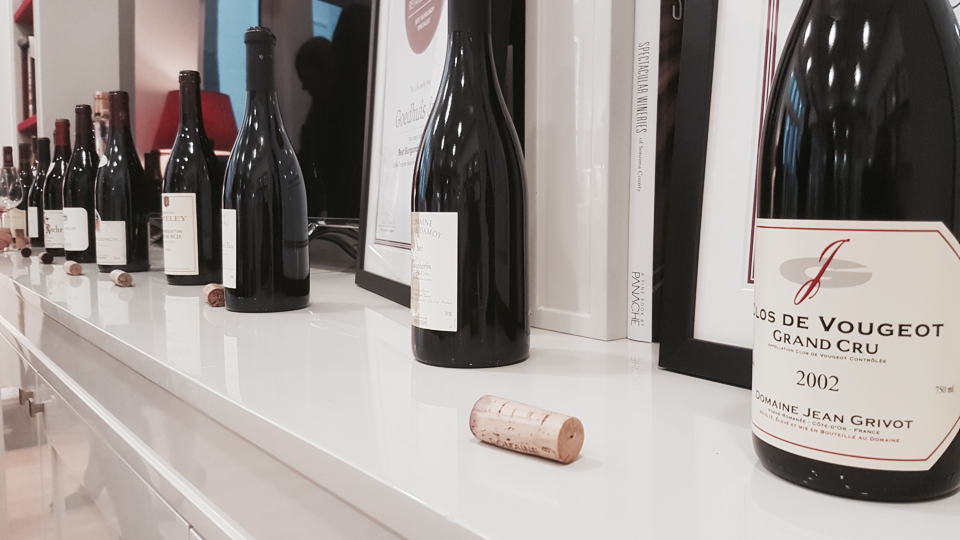
2008 White Burgundy
Growing Season
It was certainly not an easy vintage for whites in 2008. Bud-break and flowering were uneven due to inclement weather, and erratic fruit set compounded the problems faced by vineyard managers, not least the ongoing threat of mildew. Chefs de culture had to be constantly vigilant, spraying their vines and making those so-called “tiny steps in the vineyard,” though as Jean-Marie Fourrier pointed out at the time, with so many national holidays peppered throughout May, some vines were left exposed and unprotected. Hopes were raised by a warm, dry July, but calamity lurked around the corner. On July 26, hailstorms swept across the region and damaged swaths of vine; this time, Meursault bore the brunt. August brought little relief from the challenging weather. I spent two weeks of that month holidaying in a gîte in Saint-Romain, and all I can remember is a) the rain, b) my young children complaining about the rain, and c) Eric Rousseau confessing that by the end of August, some vines showed potential alcohol levels of 9 percent. What saved the vintage was a spell of warm weather that arrived on September 14, drying out vineyards and reducing the threat of rot. Subsequent cooler conditions inhibited malic conversion, resulting in quite zingy acidity levels. I recall visiting cellars in January 2009 with the temperature at –9°C or –10°C outside, the winemakers’ heaters on full blast to kick-start the malolactics.
The Wines
Given the appalling nature of the growing season, I was pleasantly surprised by the quality of the white 2008s. While some wines had obviously fallen by the wayside, there was plenty to enjoy – and not only at the upper levels of the Burgundy hierarchy. Check out the splendid Puligny-Montrachet from Louis Carillon or Caroline L’Estimée, winemaker at Jean-Noël Gagnard, whose Hautes Côtes de Beaune Sous Eguison shows wonderfully after a decade. Chassagne seems to fare better than Puligny or Meursault; there are admirable contributions from Jean-Claude Bachelet, Jean-Noël Gagnard, Jean-Marc Pillot and a quite brilliant Les Tessons from Jean-Philippe Fichet. These wines suggest that the white 2008s are not going to repay continued cellaring, but you may be pleasantly surprised just how well some are evolving, given the growing season in which they were born. Though it goes without saying that premature oxidation is a constant danger, just one of the bottles at this tasting showed evidence of that affliction.
2011 Red Burgundy
Growing Season
The 2011 growing season began with cool temperatures, as you would expect, but in April, summer appeared to come early as the mercury intermittently touched 30°C. Cue an early bud-break; the vines sprinted out of the blocks, spurring talk of a mid-August harvest. However, things began to go awry in July, which was cool and wet, while August was warm rather than particularly hot. The brakes were put on the growing cycle, but it was still a relatively early picking, with many teams entering the vineyards at the very end of August or the beginning of September.
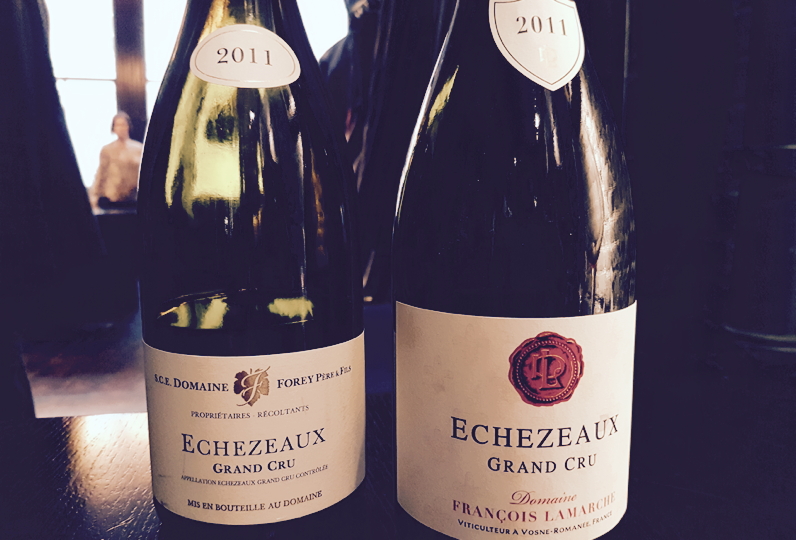
The Wines
I tasted some 75 Burgundy 2011 reds at La Cabotte restaurant, which I mention here because it boasts one of the best Burgundy lists in London. The motive was to revisit an overlooked growing season overshadowed by vintages on either side. Throw in insinuations of lady beetle infestations (part deux) during fermentation that supposedly imparted a distasteful green/cardboard-like tincture à la 2004 and you end up with a vintage in danger of being given a wide berth by cognoscenti. On the basis of the tasting, my advice is: Do not avoid. But do choose carefully. Of course, this is not a comprehensive tasting of hundreds of wines, and the growers under inspection might not rank in the highest echelons in some people’s minds. Still, I was pleasantly surprised by the performance of many Premier Crus, a majority of which are drinking well now. If anything, some of them appear to have put on a little weight over the last couple of years, as red Burgundy often does. Take a look at growers like Domaine de Montille and Mugneret-Gibourg, or the underrated appellation of Nuits Saint-Georges, boasting splendid wines from Thibault Liger-Belair and Henri Gouges. These are not going to be long-term propositions; however, revisiting these 2011s made me think that the best will drink for longer than I initially expected.
2013 Red Burgundy
Growing Season
I suspect that 2014 will overshadow the 2013 vintage, although in conversation, many Burgundy growers hold 2013 in high regard, describing it as a “classic.” After a cold snap at the beginning of the year, temperatures only grudgingly began rising in March, inhibiting vines from commencing their growing cycle. March through May brought rain of biblical proportions – between 60% and 100% more than average, depending on the appellation; some low-lying vineyards were flooded and tractors became bogged down in the clay soils. Consequently, bud-break was late and growth lagged way behind schedule, and there were no dry windows to get out and spray. Some let-up in the rain in June allowed the vines to catch up, but later in the month it turned cool, and there was widespread coulure and millerandage. Hopes were raised when July turned blissfully warm. Alas, a severe hailstorm on July 23 devastated Savigny-lès-Beaune and surrounding appellations such as Pommard and Pernand-Vergelesses. The rest of the season witnessed a slow ripening and an inevitable late harvest, the whites picked from the final week of September and the reds from the beginning of October.
The Wines
A majority of these notes derive from Geodhuis’s annual Burgundy tasting in London. A quick perusal of my notes shows that despite the challenges of the 2013 growing season, it was possible to make very fine red Burgundy, but it is a vintage in which the name of the grower is paramount. For example, Etienne Grivot’s wines really stood out, as they have done in previous tastings. A.F. Gros produced a wonderful Richebourg, which often represents one of the best values if you crave a wine from this Grand Cru. But there are vexing wines. The 2013 Clos des Lambrays from magnum did not match previous experiences of this wine, and it tapered fast on the leafy finish. Speaking to many Burgundy growers about the vintage, there is a growing appreciation among them, particularly as the style is what you might describe as “classic.” Certainly 2013 is one to keep an eye upon, and who knows? Maybe, like 1993, the wines will blossom in bottle.
In the second part of this article, I will examine older Burgundy wines and some quite extraordinary bottles.
See the Wines from Youngest to Oldest
You Might Also Enjoy
Fermented Grape Juice: Romanée-Conti 1953-2005, Neal Martin, April 2019
This Is Not Morey-Saint-Denis, Neal Martin, March 2019
Bottles Never Forgotten - Burgundy Edition, Neal Martin, March 2019
Caught Somewhere in Time: Clos de Tart 1887-2016, Neal Martin, February 2019
The Picardy Third: 2016 Domaine de la Romanée-Conti In Bottle, Neal Martin, February 2019
2017 Burgundy: A Modern Classic, Neal Martin, January 2019
Blind Vision: 2015 Burgundy Red & White, Neal Martin, November 2018
Show all the wines (sorted by score)
- Albert Bichot (Domaine du Clos Frantin)
- Bouchard Père & Fils
- Camille Giroud
- Caroline L'Estimée
- Château de la Tour
- Christophe Roumier (Domaine Georges Roumier)
- Domaine A-F Gros
- Domaine Anne Gros
- Domaine Armand Rousseau
- Domaine Arnaud Ente
- Domaine Arnoux-Lachaux
- Domaine Ballot-Millot
- Domaine Bernard Moreau et Fils
- Domaine Blain-Gagnard
- Domaine Bonneau du Martray
- Domaine Boyer-Martenot
- Domaine Bruno Clair
- Domaine Capitain-Gagnerot
- Domaine Chandon de Briailles
- Domaine Chanson
- Domaine Chavy-Chouet
- Domaine Christian Sérafin
- Domaine Claude Dugat
- Domaine Comte Armand
- Domaine Comte Georges de Vogüé
- Domaine Confuron-Cotétidot
- Domaine Coquard Loison Fleurot
- Domaine Daniel Rion
- Domaine de Courcel
- Domaine de la Pousse d'Or
- Domaine de l'Arlot
- Domaine de la Romanée-Conti
- Domaine de la Vougeraie
- Domaine de Montille
- Domaine Denis Bachelet
- Domaine Denis Mortet
- Domaine des Comtes Lafon
- Domaine des Lambrays
- Domaine Didier Fornerol
- Domaine Drouhin-Laroze
- Domaine du Comte Liger-Belair
- Domaine Dujac
- Domaine Duroché
- Domaine Emmanuel Rouget
- Domaine Etienne Sauzet
- Domaine Faiveley
- Domaine Follin-Arbelet
- Domaine Fontaine-Gagnard
- Domaine Forey Père et Fils
- Domaine Fourrier/Jean-Marie Fourrier
- Domaine François Bertheau
- Domaine François Confuron-Gindre
- Domaine François Lamarche
- Domaine François Raveneau
- Domaine Gagnard-Delagrange
- Domaine Geantet-Pansiot
- Domaine Georges Lignier et Fils
- Domaine Georges Mugneret-Gibourg
- Domaine Georges Roumier
- Domaine Gérard Raphet
- Domaine Ghislaine-Barthod
- Domaine Gros Frère et Soeur
- Domaine Guy Roulot
- Domaine Henri Germain et Fils
- Domaine Henri Gouges
- Domaine Henri Jayer
- Domaine Hubert Lamy
- Domaine Hubert Lignier/Hubert Lignier
- Domaine Hubert & Olivier Lamy
- Domaine Hudelot-Noëllat
- Domaine Humbert Frères
- Domaine Jacques Prieur
- Domaine Jean-Claude Bachelet
- Domaine Jean-Claude Ramonet
- Domaine Jean-François Coche-Dury
- Domaine Jean Grivot
- Domaine Jean-Louis Chavy
- Domaine Jean-Luc & Paul Aegerter
- Domaine Jean-Marc Boillot
- Domaine Jean-Marc Bouley
- Domaine Jean-Marc Fourrier
- Domaine Jean-Marc Pillot
- Domaine Jean-Noël Gagnard
- Domaine Jean-Philippe Fichet
- Domaine Jean Tardy
- Domaine J-F Mugnier
- Domaine Lamy-Pillot
- Domaine Leflaive
- Domaine Leroy
- Domaine Lignier-Michelot
- Domaine Louis Boillot et Fils
- Domaine Louis Carillon & Fils
- Domaine/Maison Henri Boillot
- Domaine/Maison Vincent Girardin
- Domaine Manuel Olivier
- Domaine Marc Colin
- Domaine Marquis d'Angerville
- Domaine Méo-Camuzet/Méo-Camuzet Frère et Soeur
- Domaine Michel Bouzereau et Fils
- Domaine Michel Gros
- Domaine Michel Lafarge
- Domaine Michelot
- Domaine Olivier Leflaive
- Domaine Patrick Javillier
- Domaine Paul Pillot
- Domaine Perrot-Minot
- Domaine Philippe Colin
- Domaine Pierre Damoy
- Domaine Pierre Morey
- Domaine Pierre-Yves Colin-Morey
- Domaine Ponsot
- Domaine Rapet Père & Fils
- Domaine Rebourgeon-Mure
- Domaine Rémi Jobard
- Domaine René Engel
- Domaine Robert Arnoux
- Domaine Robert Chevillon
- Domaine Robert Dubois et Fils
- Domaine Robert Groffier
- Domaine Rossignol-Trapet
- Domaine Sérafin Père & Fils
- Domaine Simon Bize et Fils
- Domaine Stéphane Magnien
- Domaine Sylvain Cathiard & Fils
- Domaine Sylvain Loichet
- Domaine Sylvie Esmonin
- Domaine Taupenot-Merme
- Domaine Thibault Liger-Belair
- Domaine Tollot-Beaut
- Domaine Vincent Bouzereau
- Joseph Drouhin
- Maison Champy
- Seguin-Manuel
